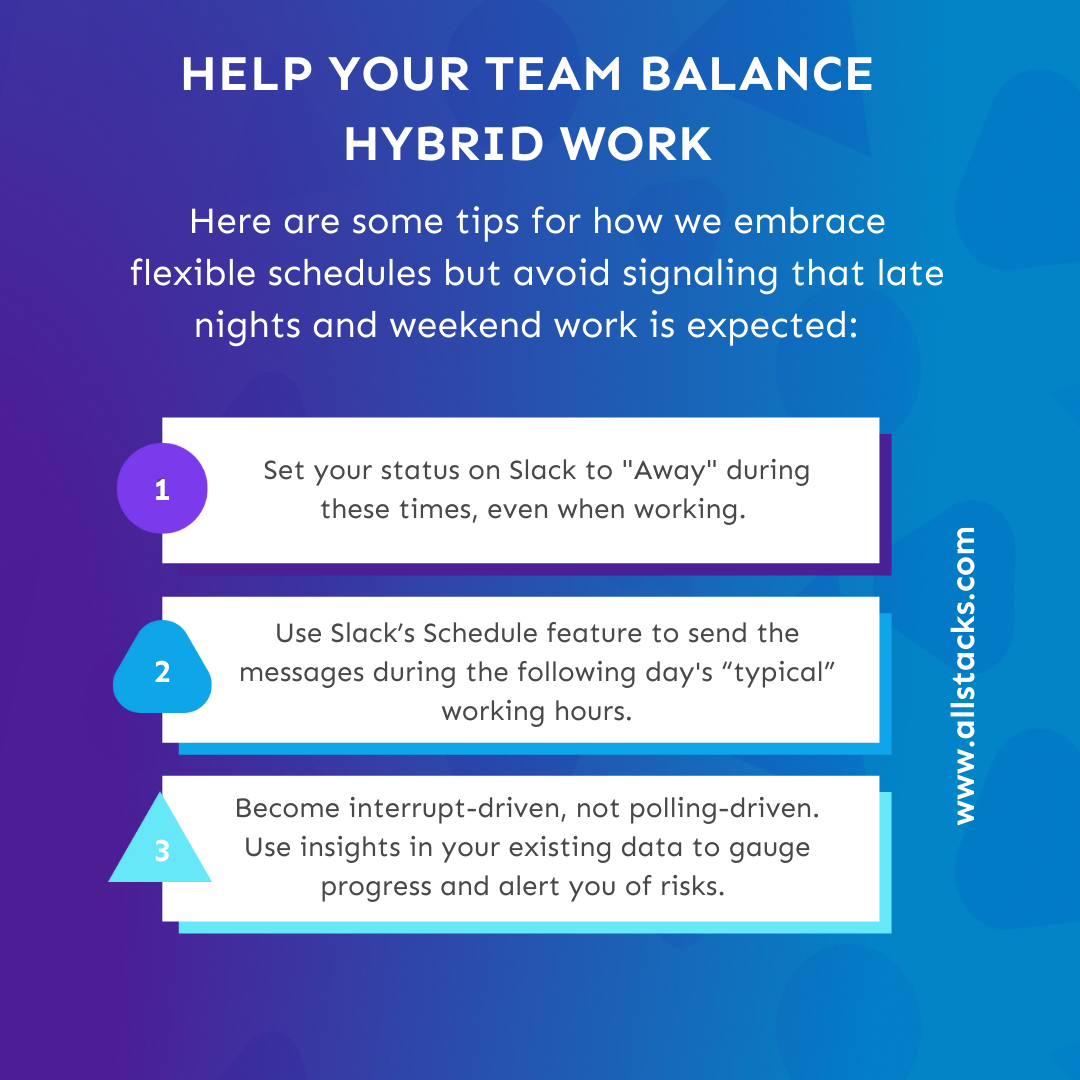With some employees working remotely and others starting to come back into the office, navigating work is a little more challenging than pre-pandemic. The good news is that last year and a half (aka the longest year ever) has proven we can do it.
A Gartner study on Post-Covid workplace practices shows the following trends that we believe will impact software teams the most significantly:
- An organizational shift to remote work
- A transition from designing for efficiency to designing for resilience
- Increase in organizational complexity
- Companies playing a more significant role in the well-being of their employees
And for better or for worse — increased passive data collection. But hopefully for the better because with power comes great responsibility.
For those responsible for software development, the ability to understand, convey and communicate the status of strategic projects to stakeholders is increasingly more critical as your company grows.
This begs the question, can we use that passive activity data from tools like Slack, Jira, Azure DevOps, and GitHub sitting unused (or misused) and lacking context for good? Use it to adapt to our evolving workplace (in complexity and locale), more reliably ship software, and eliminate developer burnout?
Yes. The data (or metadata, really) around how we plan, prioritize, and build software can be helpful for the changing work environment benefit team members and the business’s success by providing more context, more communication, and proactive prioritization of work.
Understanding engineering workflow and project progress
With so many of us working from home during the past year while balancing family life, the typical 9-5 work schedule went out the window. As a result, tracking productivity and managing collaboration have wholly changed because it looks different for each team member. Work gets done when employees can get it done. This new asynchronous approach to work means teams need to stay ahead of changes and quickly understand how it impacts timelines and deadlines. Understanding the progress of projects and development timelines shows if specific tasks are completed but not when things are happening.
We used our customer population data to see what trends and changes engineering teams were impacted by the pandemic. In the graph below, we looked at what days coding gets done pre-and post-covid. First, without so many start-of-the-week meetings to attend and weekend catch-up, more coding can get done on Mondays. And in another non-surprise, engineers are getting things done on the weekends. It’s no secret that most people have been juggling both work and life demands more than ever in the last year. It’s now the norm for work to be done in pockets of time throughout the weekend. We know that interrupted work keeps developers from reaching a flow state.
As life begins to return to normal and schedules begin to better balance between work hours and home hours, leaders should leverage the data to:
- Encourage teams to be more productive during the workweek and preserve evenings and weekends for much-needed personal time.
- Become interrupt-driven rather than polling-driven (i.e. reduce status meetings) by tracking activity across multiple collaboration tools. The aggregation of this data will help identify risks and forecast how the activity is impacting delivery so you can make decisions to get things back on track without constantly asking your team for updates. The result will ultimately be happier developers 😀.
- Provide teams with the same level of visibility on project status and how their work ties to the gals of the business. This allows them to decide what to prioritize and make adjustments to timelines and deliverables.
Darrell Hyde, VP of Product at ClearDATA, had this to say about the importance of using the right tools and tracking the correct data in the current work environment:
“More so than ever, we’re very reliant on our data. It helps me feel in control, and it’s essential to us. When we commit to meeting a feature within a given period, we can fulfill customer needs. I can make sure we’re on track, or we can make a course correction early. So forecasting and velocity, and data are that much more important. Our customers need us to be at our best to support them.”
Learn more about how Allstacks uses this “passive” data to generate insights about your teams’ workflow and how that impacts delivery:
- Allstacks Use Cases by Role
- The list of integrations we support to derive these insights for leaders.
- Schedule a demo to get started with a trial.
Security matters to make work “work”
As remote work became mandatory in most workplaces through much of 2020 and hybrid work models became standard, data security continues to be a significant concern with teams working from networks and devices that are not as secure. Daniel Newman, a Principal Analyst at Futurum Research, wrote recently about how the new work environment requires updated security protocols. In addition, he noted the increased need for security as collaboration tools become more widely used throughout all industries.
Because we analyze companies’ sensitive and proprietary data - their code, we take security very seriously, always have. Allstacks was ahead of the curve on this, offering security assurances through our SOC 2 Type 2 certification. And if there is data you don’t want to keep in the Allstacks cloud, it can be deleted if you request it. And data you share with clients is secure as well. Allstacks uses and enforces SSL encryption for all user sessions and service connections whenever supported by the respective service. Encryption is standard even when customer data is at rest in databases, backups, and in all staging and production environments.
The correct data and the proper analysis can help companies adapt and stay productive during unprecedented adaptive challenges. The right tools make all the difference.
To understand how your organization can better utilize data in the new normal of work, check out People, Process, and Outcomes: COVID-19 and the State of Software Development.

Written By:







